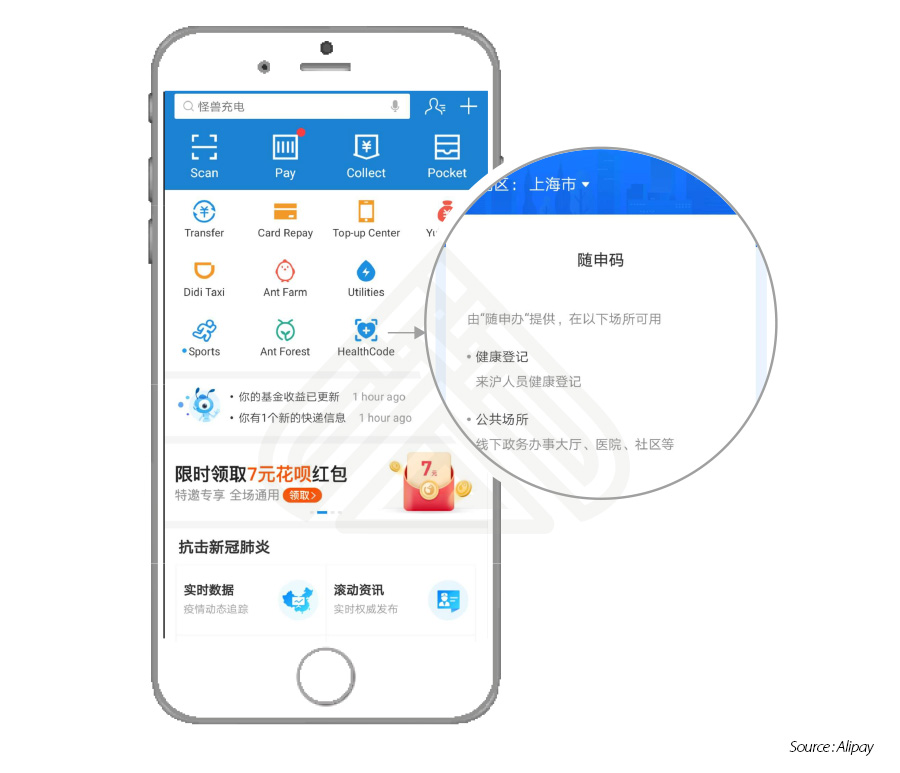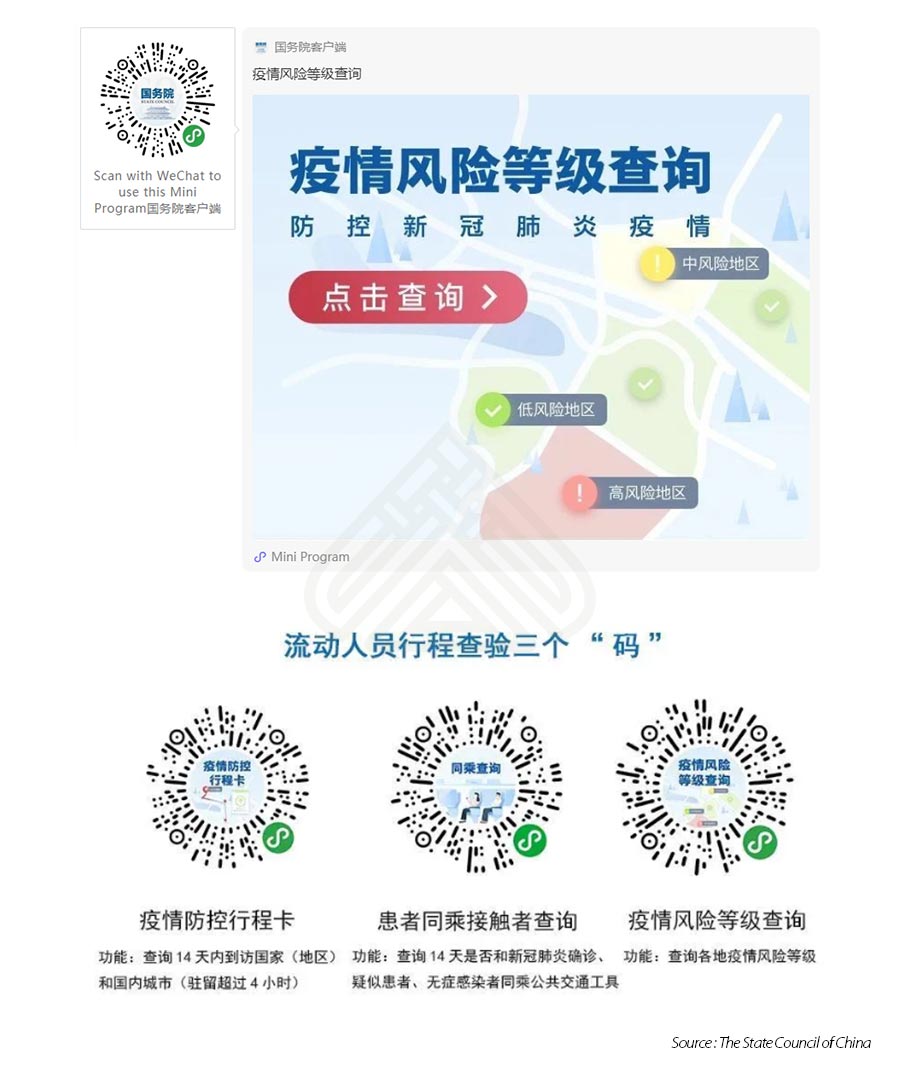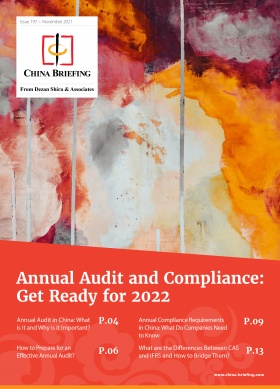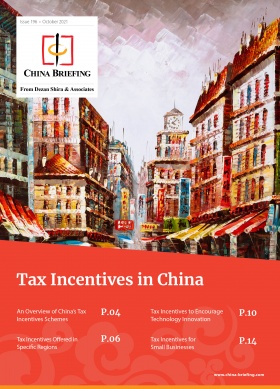China’s Travel Restrictions due to COVID-19: An Explainer
-
China Briefing continues its coverage of updates related to travel/entry into China for foreign nationals: How Can Foreigners Enter China Under the COVID-19 Travel Restrictions?
- Breaking News: China accepts US Travelers inoculated with American-made vaccines. The Chinese Embassy in the United States issued a notice on April 21, 2021, allowing US passengers vaccinated with American-made non-inactivated vaccines to depart from Dallas and enter the Chinese mainland. The accepted American-made non-inactivated vaccines include vaccines made by Pfizer, Moderna, and Johnson & Johnson. The Notice required that passengers must get all the required shots before their trip to China. China-bound passengers are also required to provide positive IgM antibody test results as well as negative nucleic acid test results.
- China will ease entry restrictions for foreigners inoculated with Covid-19 vaccines made in China, according to some Chinese embassies (See here). The said visa facilitation applies only to applicants who have been inoculated with COVID-19 vaccines produced in China (either having received two doses of Chinese-made vaccines with the stipulated gap in between, or having received a single-dose Chinese-made vaccine at least 14 days prior to the application) and obtained the vaccination certificate. A proof of a negative COVID-19 nucleic acid test result and the Health and Travel Record Declaration Form for Visa Application are no longer required. The new rules in some places have taken effect on March 15, 2021. In addition, according to China’s foreign minister Wang Yi, the country plans to issue international electronic health certificates and implement mutual recognition of other countries’ nucleic acid testing and inoculation, to allow “a healthy, safe, and regulated new order for cross-border exchanges of people.”
- China Briefing offers a few observations on the latest changes in travel / entry into China for foreign nationals: China to Allow Entry of Foreigners with Valid Residence Permits.
- According to a statement released by the Ministry of Foreign Affairs and the National Immigration Administration on Wednesday, foreign nationals holding valid Chinese residence permits for work, personal matters, and reunion can enter China without applying for new visas – effective from 0 am, September 28, 2020. If these 3 categories of residence permits as held by foreign nationals have expired (in the time since the travel ban was imposed on March 28, 2020) – the holders may apply for relevant visas by presenting the expired residence permits and relevant material to the Chinese embassies or consulates on the condition that the purpose of the holder’s visit to China remains unchanged (see here). All other measures in the March 26 Announcement by the Ministry of Foreign Affairs and the National Immigration Administration on the Temporary Suspension of Entry by Foreign Nationals Holding Valid Chinese Visas or Residence Permits (see here) will continue to be implemented.
- Chinese state media announced that starting September 3, the country is resuming direct flights from eight countries, including Thailand, Cambodia, Pakistan, Greece, Denmark, Sweden, and Canada.
- Latest update: As of August 27, China has opened its borders to 36 European countries and 13 Asian countries (see the “International travel restrictions” section for more details).
- This article provides information on the latest travel policies in China – implemented temporarily due to COVID-19 – to help business travelers understand the current situation and develop feasible travel plans.
- We address some frequently asked questions with regards to foreigners managing their China residence and work permits when stuck abroad due to the travel ban in our article here and share three successful cases of foreigners’ special visa application in our article here.
- For timely updates, you can track our COVID-19 timeline here, which is updated daily.
COVID-19 is now a global pandemic, and in a bid to prevent a second wave of the outbreak at home, China has not given up on drastic measures to contain infections or possibility of reinfection. However, with the epidemic in domestic areas basically under control, the country has recently begun relaxing travel restrictions.
Since March 28, the country’s borders have been closed to almost all foreigners. This looks to be slowly changing. On August 10, China announced that foreign nationals from 36 European countries who hold valid residence permits, including work permits or permits for family reunion and personal matters, can apply for visas for free and directly at any Chinese embassy or consulate to enter China. In addition to these European countries, according to official sources, foreign nationals with valid residence permits (employment, personal affairs, and reunion) from a list of 13 Asian countries are also allowed to apply for visas at local Chinese embassy or consulate.
Since March 29, the Civil Aviation Administration of China (CAAC) has implemented the so-called five-one policy to cap international flights and reducing the number of international flights on China bound routes. This was relaxed from June 4, when the CAAC started allowing more international flights into China.
While the virus hasn’t fully disappeared, and sporadic outbreaks reported in individual cities – China is still adopting a strict isolate-and-tracking strategy in high-risk areas. (At the time of this article update, most of the country has been classified as low-risk.)
This article provides information on the latest travel policies in China – implemented temporarily due to COVID-19 – and meant to contain any internal spread of the coronavirus.
International travel restrictions
Opening up China’s borders
On August 10 – almost four months from when its borders were first closed – China made its first official announcement allowing foreign nationals from certain European countries to begin applying for visas again at the local Chinese embassy or consulate in the stipulated countries.
The announcement, made by The Embassy of the PRC in Denmark, stated that foreign nationals who hold valid residence permits (including work permits and permit for family reunion and personal matters) in 36 European countries may now apply for Chinese visas at any Chinese embassy or consulate within the stipulated countries. These countries are: Albania, Austria, Belgium, Bosnia and Herzegovina, Bulgaria, Croatia, Cyprus, Czech Republic, Denmark, Estonia, Finland, France, Germany, Hungary, Iceland, Ireland, Italy, Latvia, Lithuania, Luxembourg, North Macedonia, Malta, Montenegro, Netherlands, Norway, Poland, Portugal, Romania, Serbia, Slovakia, Slovenia, Spain, Sweden, Switzerland, Greece, and the United Kingdom.
As of August 27, according to official resources, nationals from 13 Asian countries are also subject to the same treatment. Foreign nationals from Japan, South Korea, Malaysia, Indonesia, Thailand, Singapore, Brunei, Sri Lanka, Cambodia, Laos, Vietnam, Myanmar, or Democratic Republic of Timor-Leste and holding valid residence permits (including work permits and permit for family reunion and personal matters) can also apply for visas at the local Chinese embassy or consulate.
Suspending the entry of foreign nationals
From midnight (0 a.m.) of March 28, 2020, China suspended the entry of most foreign nationals, citing the temporary measure as a response to the rapid spread of COVID-19 across the world.
According to the announcement was made by China’s Ministry of Foreign Affairs on March 26, foreigners who hold the following visas, even valid ones, are not allowed to enter China now:
- Chinese visa;
- Residence permit;
- APEC business travel card; and/or
- Port visa.
The ban also applies on those who are planning to enter the country under the following policies:
- 24/72/144-hour visa free transit policy;
- Hainan 30-day visa free policy;
- 15-day visa free policy for foreign cruise group tours through Shanghai Port;
- Guangdong 144-hour visa free policy for foreign group tours from Hong Kong or Macao SAR; and/or
- Guangxi 15-day visa free policy for foreign tour groups of ASEAN countries.
However, those who hold the following visas will not be affected:
- Diplomatic, service, courtesy, or C visas; and
- New visa successfully applied for from Chinese embassies or consulates overseas after the announcement of the Ministry of Foreign Affairs.
Obtaining COVID-19 negative certificates
Since July 20, 2020, the CAAC has required both foreign and Chinese passengers flying into China to obtain COVID-19 negative certificates before boarding if they are from or transferring via the listed countries. You may check the listed countries on the following official link for the real-time updates: https://hr.cs.mfa.gov.cn/help_two/help-two/gj.html.
Passenger must complete the nucleic acid tests at facilities designated or recognized by Chinese embassies in host countries within five days before embarkation. Chinese embassies will carefully assess the testing capacity of host countries and formulate travel procedures when testing conditions are met.
Setting up fast track channels with specific countries
Meanwhile, as the outbreak eases, to maintain the necessary international business activities, China is communicating with the rest of the world to relax its border restrictions.
Various countries’ embassies and chambers of commerce have been negotiating with the Chinese government to establish fast track channels. So far, China has signed fast track agreements with Germany, France, South Korea, UK, Japan, and Singapore.
- On June 3, China and Singapore signed the agreement to launch a “fast track”, which will enable travelers from both sides to enter each other’s territories without serving quarantine periods.
- On May 22, a fast track for British business travelers to China engaged in key sectors was created in partnership with the British government, according to the Chinese Ambassador to Britain, Liu Xiaoming.
- On May 16, Beijing News, a state-run newspaper, had reported that the governments of China and Germany negotiated to set up a “fast track” procedure for personnel to travel between each other’s territories. The first charter flight carrying German businesspeople flew from Frankfurt to Shanghai on May 25.
- Earlier on April 21, MoFA revealed that China and South Korea had reached an agreement in principle on establishing a fast track arrangement for urgent essential travel between the two countries. On August 5, China announced it was resuming visa issuance for South Korean students, employees hired to work in China, and those with residence permits.
According to the European Chamber of China, supporting measures to facilitate the return of foreign nationals to China for urgent or necessary purposes are being conducted at a local level, including in Beijing, Chongqing, Guangdong, Jiangsu, Shandong, Shanghai, and Tianjin.
In Shanghai, the Ministry of Foreign Affairs (MFA) and the Shanghai Municipality Government have issued two channels – a normal channel and a fast track channel – to facilitate the entry into China of employees essential for business operations.
The fast track channel is only applied to employees of companies whose country of origin has signed a fast track agreement with China.
Employees entering Shanghai following the fast track procedure will be allowed to start work within 48 hours after arrival, subject to negative COVID-19 test results. Those entering Shanghai following the normal procedure will be subject to a 14-day quarantine at a designated central facility. Please check our article here to understand the detailed application procedures.
China’s international flight restrictions
On March 29, the Civil Aviation Administration of China (CAAC) had announced the so-called “Five One” policy – Chinese airlines would be only allowed to maintain one international route to any specific country – with no more than one flight every week. Foreign airlines are only allowed to maintain one route to China, with no more than one weekly flight.
All airlines shall apply for Pre-Flight Plans to the Operation Supervisory Center of CAAC in advance. This policy will last until October 2020. Business travelers must check if their flight is approved by the CAAC, or they will risk having their air tickets cancelled. International flights operating in June can be found here.
On June 4, the CAAC said it would allow all foreign airlines, including those which were barred from operating flights to China, to choose from a list of approved cities to operate on one international passenger flight a week beginning June 8. The announcement came right after the US Trump administration issued an order to suspend Chinese airlines. After Beijing said it would allow in more foreign carriers, on June 5, the US amended its order to permit Chinese passenger air carriers to operate two flights per week.
Recently, according to reporting from Caixin, China is adding more flights from Japan and South Korea. According to the Japanese embassy in China and airline companies, there will be 15 passenger flights between China and Japan every week in August, up from 12-a-week in July. Weekly flights between China and South Korea are also increasing to 15 in August from nine in July, including eight operated by Chinese airlines and seven by Korean carriers.
Provincial travel restrictions
Domestically, many provinces and cities require mandatory home-based or centralized quarantine for inbound travelers either from overseas or other Chinese provinces and cities that are at medium- or high-risk level, although the policy details can differ.
Recent regional outbreaks
Recently, there have been new COVID-19 cases in Hong Kong, Urumqi, which is the capital of Xinjiang, and Dalian of Liaoning province. Passengers traveling from or to these risk areas will be tightly controlled.
In the Chinese mainland, the government has established a mature system to quickly implement large-scale testing and screening and lock down specific compounds and streets to block the spread of the virus. The harsh measures have successfully controlled recent outbreaks in Beijing, Xinjiang, and northeastern areas.
As of August 12, Xinjiang had 535 confirmed COVID-19 cases and 131 asymptomatic cases, and 14,569 people were still under medical observation. But the number of new confirmed COVID-19 cases had reduced to nine on August 12. As of August 11, Dalian had reported no new local confirmed cases; the city has confirmed a total of 92 coronavirus cases.
Hong Kong is experiencing a third wave of the COVID-19 pandemic. On August 11, Hong Kong recorded 33 new COVID-19 cases, the lowest daily total in nearly a month. Guangdong province now requires those crossing the border from Hong Kong to present negative COVID-19 test results, on top pf quarantine requirements.
Quarantine policies for inbound travelers
From April 1, the Customs authorities have said they would cooperate with local governments to carry out nucleic acid testing for all overseas passengers entering China by air, sea, or land.
In Beijing, all international flights are currently being redirected to one of 16 other cities – Chengdu, Changsha, Hefei, Lanzhou, Tianjin, Shijiazhuang, Taiyuan, Hohhot, Jinan, Qingdao, Nanjing, Shenyang, Dalian, Zhengzhou, and Xi’an, with Wuhan as back-up, which are officially called “the first entry point”.
Travelers will be subject to a 14-day mandatory quarantine in the first entry point city. After they complete the fortnight quarantines and test negative for the virus, if they proceed to Beijing on the same or following day, they will not need to undergo another 14-day quarantine in Beijing. Otherwise, they will be subject to another 14-day quarantine upon arrival in Beijing.
Those older than 70, younger than 14, pregnant, with underlying medical conditions, or in other special situations – can apply for self-isolation at home. Others must pay for their own 14-day quarantine at designated hotels.
Domestic arrivals from other low-risk infection areas of China no longer need to undergo the 14-day home isolation after the city lowers its public health emergency response rating from level one to level two.
Similarly, from March 28, all international flights to Shanghai are directed to Pudong Airport. All passengers entering Shanghai from abroad, including those transferring in Shanghai, will be subject to virus testing and centralized quarantine for 14 days. Domestic travelers may not need to be quarantined if they come from low-risk areas.
Effective from March 25, Hong Kong banned all entry of non-Hong Kong residents coming from overseas countries and regions by plane. And non-Hong Kong residents coming from the Mainland, Macau, and Taiwan will be denied entry to Hong Kong if they have been to any overseas countries and regions in the past 14 days. You may check the updates on Hong Kong’s quarantine policy on this website: coronavirus.gov.hk/eng/inbound-travel.html.
China’s color-coded health scheme to monitor for COVID-19
All of China’s provincial and municipal governments are adopting different quarantine policies or various restrictive measures – based on a health code scheme.
Since February, Chinese tech giants Tencent and Alibaba have launched health code related services around the country.
The health code systems of Tencent and Alibaba are embedded in their popular messaging app WeChat and payment app Alipay. Residents get a colored health code after reporting information, such as ID card, address, health status, contact history, and residence history in the apps.
The health code serves as a proof for citizens to enter or exit the public place, also a necessary condition to resume work or study. In addition, enterprises and communities can classify citizens based on the color of the health code to carry out correct controlling measures.
Each city’s health code has a set of rules.
Taking Hangzhou as an example, after the systematic analysis of personal information, the system will generate a color code to be obtained by individuals. Among them, the ‘green’ code can allow citizens to move around the city freely; the ‘red’ code and ‘yellow’ code may subject the code owner to 14 days and seven days of quarantine, respectively, at home or at a designated hotel.
Previously, the health color code systems in different provinces and cities showed variations, which added layers of inconvenience to intercity travelers.
To solve their complaints, on March 18, Beijing urged that local areas shall recognize each other’s health certificates (color codes), stating that low-risk areas (those with no confirmed cases or no new confirmed cases for 14 consecutive days) shall not “set up barriers” or “take isolation measures”.
Now, localities have been completing technology docking to allow citizens to freely pass using one health code system. For example, users of Alipay can easily get a local color code by entering the “health code” port and picking an area as the picture shown below.
Checking the regional risk level
China’s National Health Commission launched a WeChat mini program (see the below graphic) for citizens to check out the infection risk level of a special area, for epidemic personnel to check out the countries and cities visited (staying for more than four hours) by the traveler during the past 14 days.
The program also allows users to check if they used the same public transport as the confirmed cases during the last 14 days.
Similar to the color scheme of the health code system, the outbreak risk level system grants “green” color to low-risk areas, “yellow” to medium-risk areas, and “red” to high-risk areas.
Risk levels are assessed based on the number of new cases.
- Low-risk areas – are areas with no confirmed cases or no new confirmed cases for 14 consecutive days;
- Medium-risk areas – are those with new confirmed cases within 14 days – but the total new cases are no more than 50, or with cumulatively more than 50 confirmed cases – but no cluster epidemic within 14 days; and
- High-risk areas – are those where the cumulative number of confirmed cases have exceeded 50 cases, and a cluster epidemic was recorded within the last 14 days.
By August 11, the entire country has been classified as low-risk except for several districts and streets in Liaoning province and Xinjiang Uygur Autonomous Region.
Generally speaking, as long as you are traveling from a low-risk area, the green color in your health code system won’t change. But if you are from medium or high-risk areas, your travel to other Chinese provinces and cities will probably be restricted.
Pay attention to micro-control measures
Overall, in a bid to boost business and consumption, China is relaxing travel restrictions within its borders. However, while most business operations are back to normal, many micro-control policies are still being implemented.
For example, some tourist and entertainment facilities have still suspended operation. Some office buildings, scenic spots, hotels, shopping malls, subways, public transports are still conducting measures to check body temperature and color code of passengers and require them to wear a mask. Cinemas are allowed to reopen but with strict control measures.
We recommend that travelers check their destination’s risk level, quarantine policies, and local control measures and prepare their color code in advance – to avoid any obstacles on their way.
Editor’s Note: This article was originally published April 1, 2020. It was last updated April 23, 2021.
Explore Our Related China Business Insights
 China After COVID-19: How Foreign Companies Can Leverage Key IT Solutions
China After COVID-19: How Foreign Companies Can Leverage Key IT Solutions
 China’s Support Policies for Businesses Under COVID-19: A Comprehensive List
China’s Support Policies for Businesses Under COVID-19: A Comprehensive List
 China’s Social Credit System: COVID-19 Triggers Some Exemptions, Obligations for Businesses
China’s Social Credit System: COVID-19 Triggers Some Exemptions, Obligations for Businesses
About Us
China Briefing is written and produced by Dezan Shira & Associates. The practice assists foreign investors into China and has done since 1992 through offices in Beijing, Tianjin, Dalian, Qingdao, Shanghai, Hangzhou, Ningbo, Suzhou, Guangzhou, Dongguan, Zhongshan, Shenzhen, and Hong Kong. Please contact the firm for assistance in China at china@dezshira.com.
We also maintain offices assisting foreign investors in Vietnam, Indonesia, Singapore, The Philippines, Malaysia, and Thailand in addition to our practices in India and Russia and our trade research facilities along the Belt & Road Initiative.
- Previous Article China Relaxes Entry Restrictions for Foreigners Inoculated with Chinese Vaccines
- Next Article Shenzhen Implements New Rules on Commercial Registration, More Friendly to FDI










